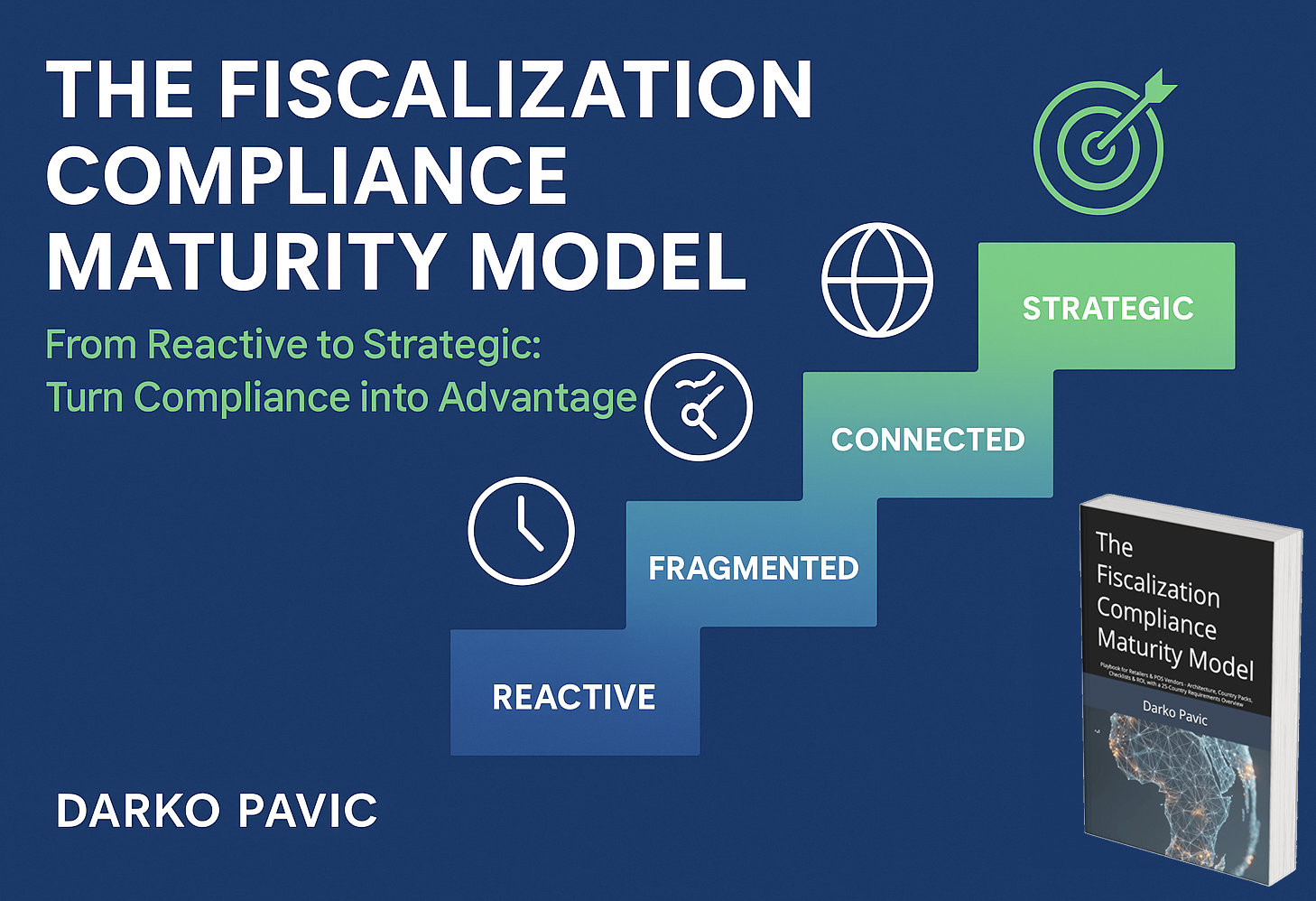
If you’re a retailer or a POS software vendor, you can handle compliance in very different ways, and the way you do it determines whether you struggle with complex requirements or turn them into speed and advantage. After 28+ years with tier-one retailers worldwide, and leading POS software development at a global provider, I see four distinct patterns. I use “compliance” broadly here: not only fiscalization, but the full spectrum of legal requirements that shape retail.
Level 1 — Reactive.
Compliance is triggered from the outside and implemented at the last minute. Deadlines drive the plan, stress drives the team, and costs are unpredictable. At this stage, compliance is seen purely as a burden.
Level 2 — Fragmented.
Each country is treated as a separate problem and solved locally with different tools and vendors. The business works, but processes are inconsistent, expansion is slow, risk is higher, and maintenance is expensive.
Level 3 — Connected.
Retailers and POS vendors start thinking globally. They introduce solutions and processes that span multiple countries, then add local adjustments on top. Compliance is no longer chaotic, but it isn’t fully harmonized yet.
Level 4 — Strategic.
Compliance becomes a strategic, value-adding capability embedded into the global operating model. Expansion is fast, repeatable, and scalable. Instead of blocking innovation, compliance enables it—creating real competitive advantages.
Every international retailer and POS vendor should aim for Level 4. Compliance isn’t only relevant during expansions; it shapes every strategy execution, new concepts, new processes, and new channels in fiscal countries all depend on getting compliance right.
In my new book, The Fiscalization Compliance Maturity Model, I explain these levels in detail and outline a practical path to move from Reactive to Strategic, so time-to-country drops, costs fall, and your teams focus on innovation instead of firefighting. The book is available on Amazon

